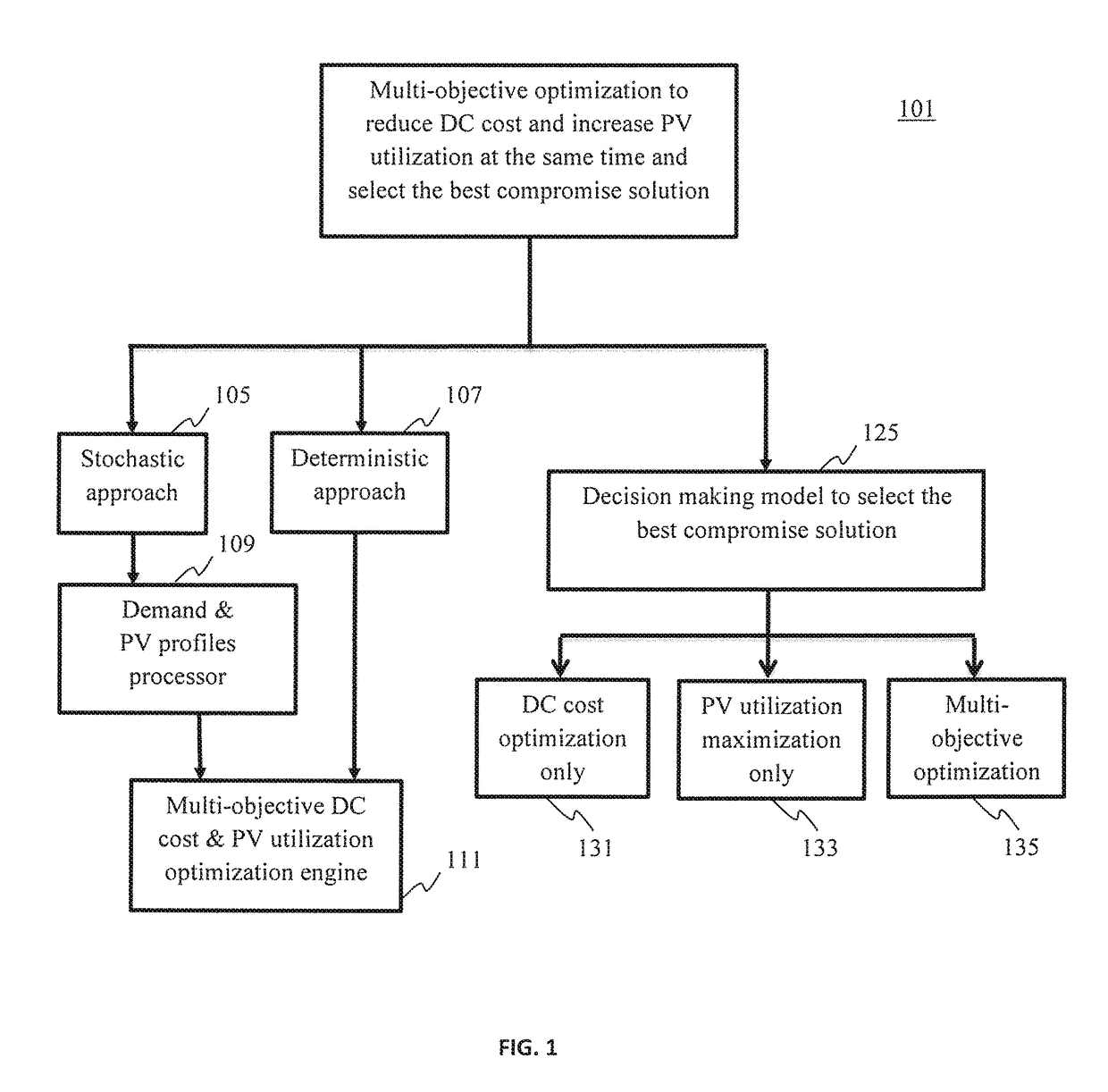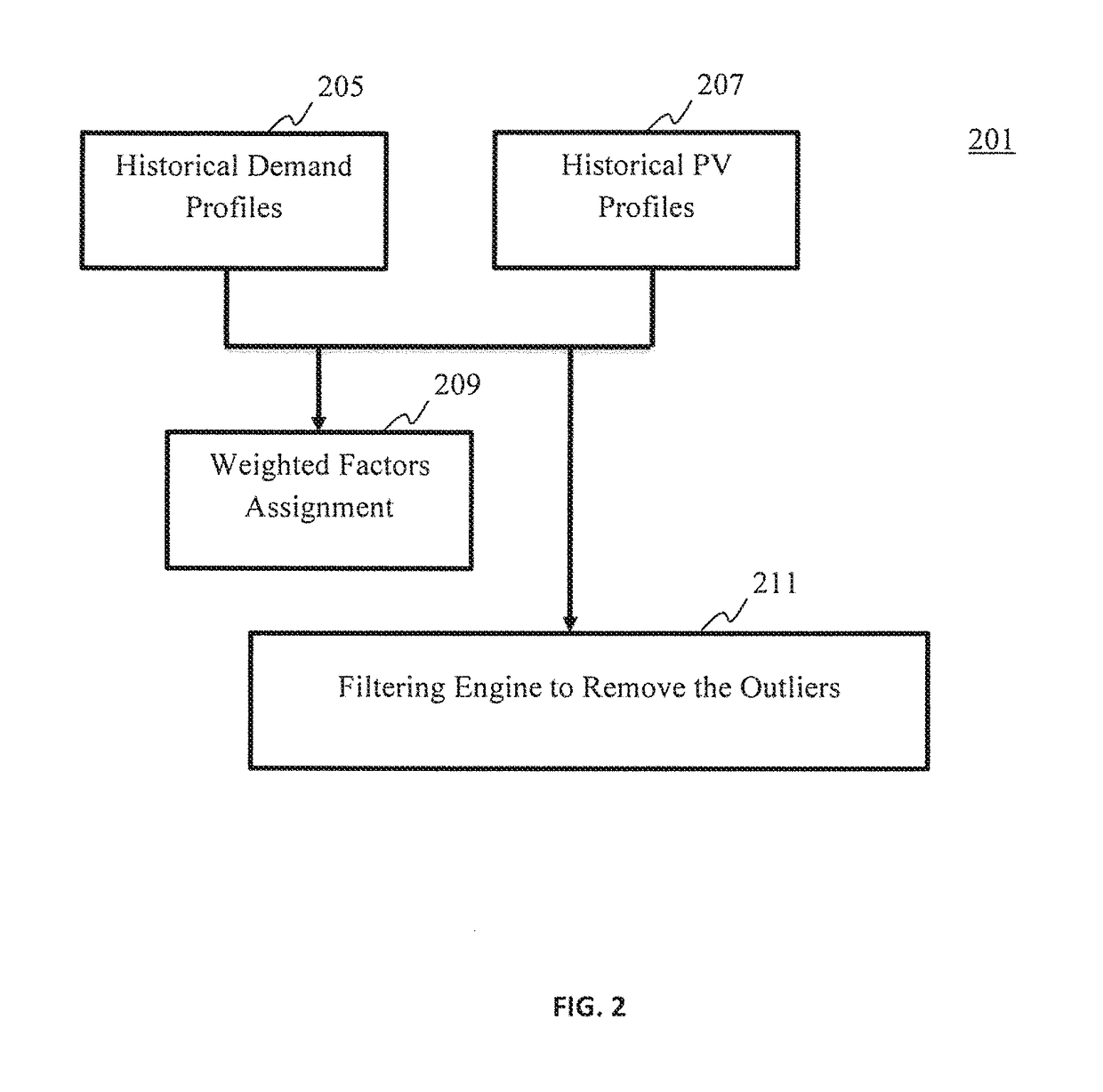Method for Operation of Energy Storage Systems to Reduce Demand Charges and Increase Photovoltaic (PV) Utilization
a technology of energy storage system and demand charge, applied in the field of energy management system, can solve problems such as reducing intermittency and fluctuations
- Summary
- Abstract
- Description
- Claims
- Application Information
AI Technical Summary
Benefits of technology
Problems solved by technology
Method used
Image
Examples
Embodiment Construction
[0018]In the exemplary embodiments of the present invention, methods and devices are presented for controlling distributed energy storage systems (ESSs) to minimize demand charge (DC) cost and to maximize local photovoltaic (PV) utilization for at least commercial and industrial buildings / facilities. Reducing DC cost has a direct impact on customer electricity bills, while increasing local PV utilization can help in the efficient operation of distribution systems. Model-based optimization methods are presented for each individual objective. Furthermore, a multi-objective control strategy can be implemented to illustrate the possibility of stacking both services on a single ESS.
[0019]Electricity bills for many Commercial & Industrial (C&I) buildings in the United States and other parts of the world include a Demand Charge (DC) cost. DC is based on the highest 15-minute average usage recorded on a demand meter within a given billing cycle. Demand charges make up a significant portion ...
PUM
 Login to View More
Login to View More Abstract
Description
Claims
Application Information
 Login to View More
Login to View More - R&D
- Intellectual Property
- Life Sciences
- Materials
- Tech Scout
- Unparalleled Data Quality
- Higher Quality Content
- 60% Fewer Hallucinations
Browse by: Latest US Patents, China's latest patents, Technical Efficacy Thesaurus, Application Domain, Technology Topic, Popular Technical Reports.
© 2025 PatSnap. All rights reserved.Legal|Privacy policy|Modern Slavery Act Transparency Statement|Sitemap|About US| Contact US: help@patsnap.com



